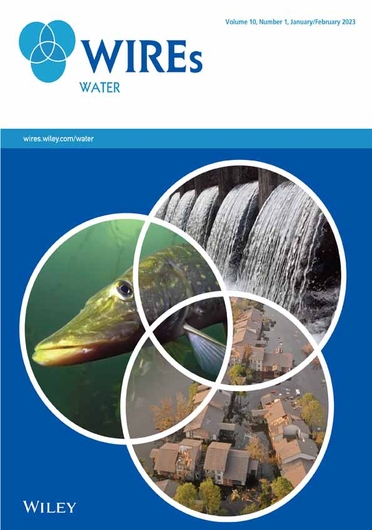Review on model development techniques for dam break flood wave propagation
IF 5.8
1区 地球科学
Q1 ENVIRONMENTAL SCIENCES
引用次数: 0
Abstract
Catastrophic failure of dam structures has often led to severe consequences. The colossal wave receding at a higher velocity from the sudden failure of the dams may obliterate the downstream areas causing loss of lives and property damage. Thus, proper mitigation measures and contingency plans must be formulated beforehand to minimize the impact of such disasters. Consequently, there has been a strong tendency to study dam breach flood modeling using different approaches for both hypothetical dam breach scenarios and real incidents. The technology used for dam breach studies is advancing and a comprehensive review of the existing methodologies would help the modelers in their model development. This paper reviews the state‐of‐the‐art methodologies utilized in studies to propagate the dam break flood wave. Furthermore this guides the selection of methods best suited considering the project‐specific requirements and the complexity of project to simulate the risk to the vulnerable areas generated from the dam break flood flow. Different terrain datasets, mesh generation techniques and calibration techniques have been adapted and adhered to improve computational accuracy, stability and efficiency in modeling dam break floods. The use of high‐resolution global and site‐specific datasets, subgrid models, the choice of roughness coefficients and high‐resolution time steps have to be investigated thoroughly in these models. The paper reviews the existing methodologies with the strengths and limitations facilitating the future dam breach modelers to select the suitable approach in dam break flood wave modeling.This article is categorized under: Engineering Water > Sustainable Engineering of Water Science of Water > Water Extremes Water and Life > Conservation, Management, and Awareness溃坝洪水波传播模型开发技术综述
大坝结构的灾难性破坏往往会导致严重的后果。由于大坝的突然破坏,以更高速度后退的巨浪可能会淹没下游地区,造成生命和财产损失。因此,必须事先制定适当的缓解措施和应急计划,以尽量减少这类灾害的影响。因此,对于假设的溃坝情景和实际事件,采用不同的方法研究溃坝洪水模型的趋势很强。用于大坝决口研究的技术正在进步,对现有方法的全面审查将有助于建模者开发模型。本文综述了目前研究溃坝洪波传播的最新方法。此外,这将指导选择最适合的方法,考虑到项目的具体要求和项目的复杂性,以模拟溃坝洪水对脆弱地区产生的风险。适应和坚持不同的地形数据集、网格生成技术和标定技术,提高溃坝洪水建模的计算精度、稳定性和效率。在这些模型中,必须彻底研究高分辨率全球和特定站点数据集、子网格模型、粗糙度系数的选择和高分辨率时间步长的使用。本文综述了现有方法的优缺点,便于今后的溃坝建模人员在溃坝洪波建模中选择合适的方法。本文分类为:工程水bbb可持续水工程水科学bbb水极端水与生命bbb保护,管理和意识
本文章由计算机程序翻译,如有差异,请以英文原文为准。
求助全文
约1分钟内获得全文
求助全文
来源期刊

Wiley Interdisciplinary Reviews: Water
Environmental Science-Ecology
CiteScore
16.60
自引率
3.70%
发文量
56
期刊介绍:
The WIREs series is truly unique, blending the best aspects of encyclopedic reference works and review journals into a dynamic online format. These remarkable resources foster a research culture that transcends disciplinary boundaries, all while upholding the utmost scientific and presentation excellence. However, they go beyond traditional publications and are, in essence, ever-evolving databases of the latest cutting-edge reviews.
 求助内容:
求助内容: 应助结果提醒方式:
应助结果提醒方式:


